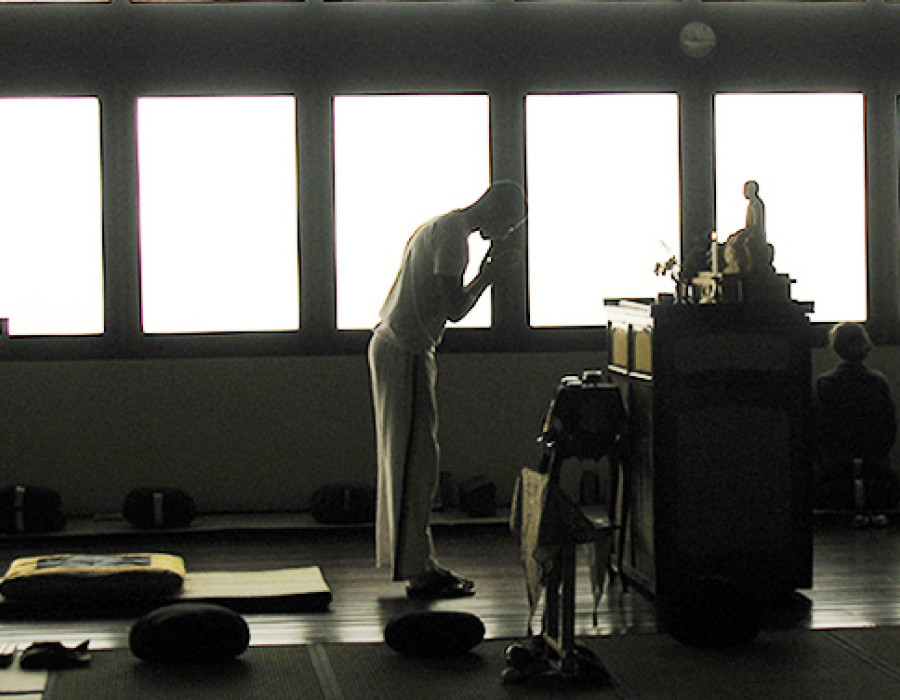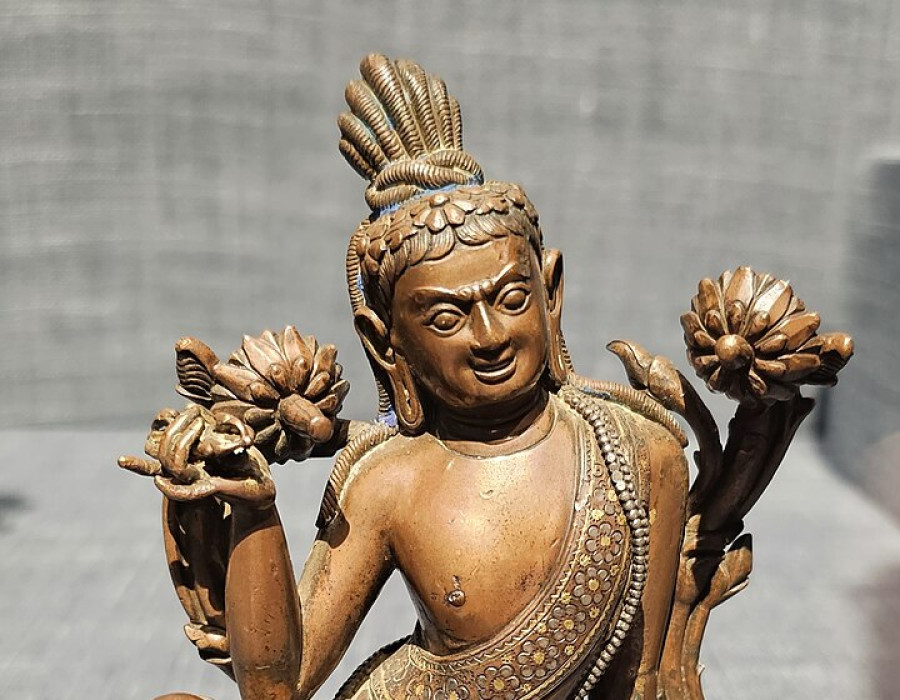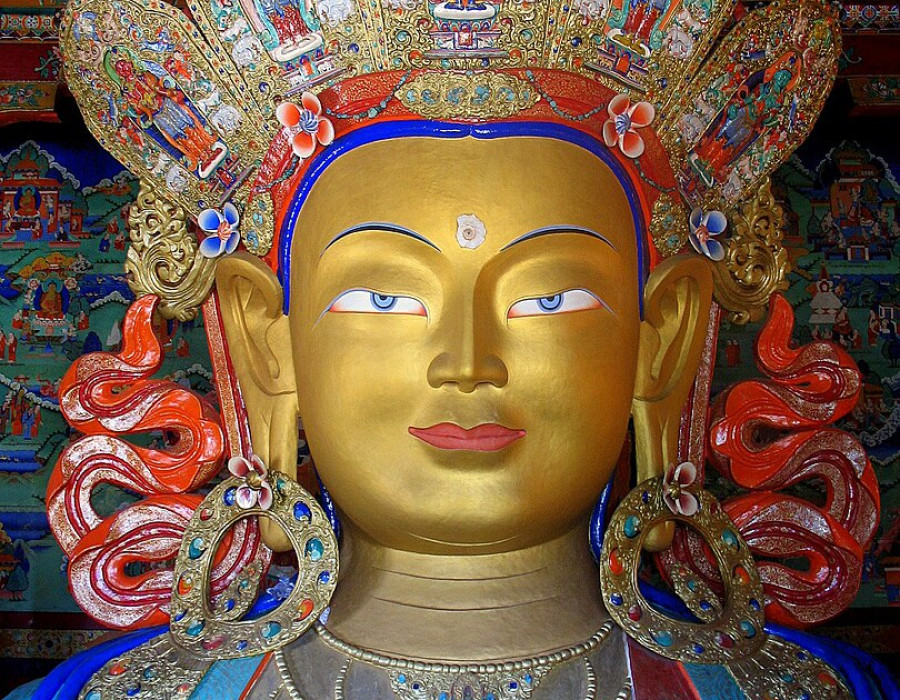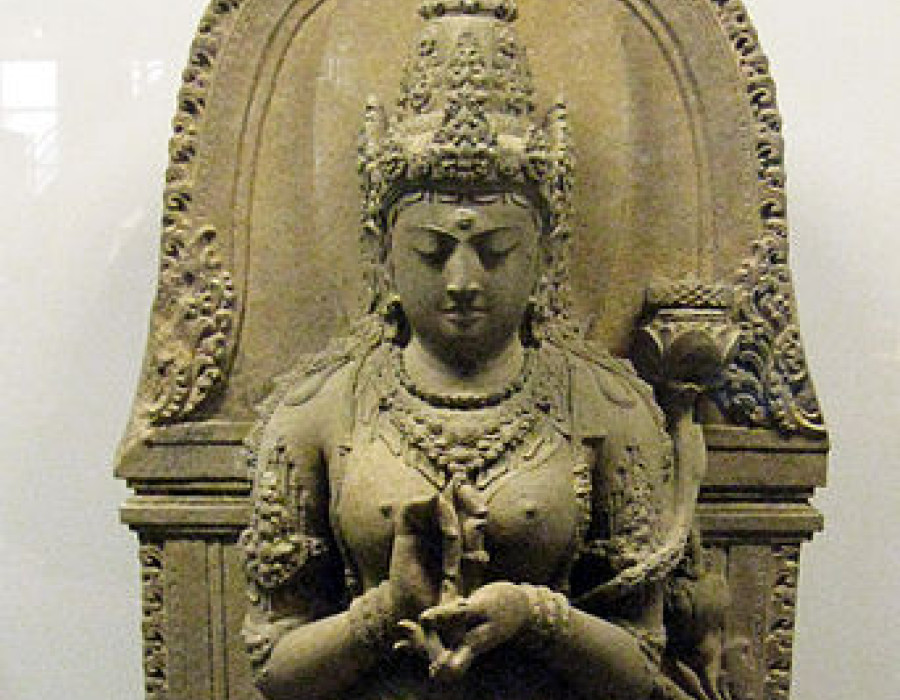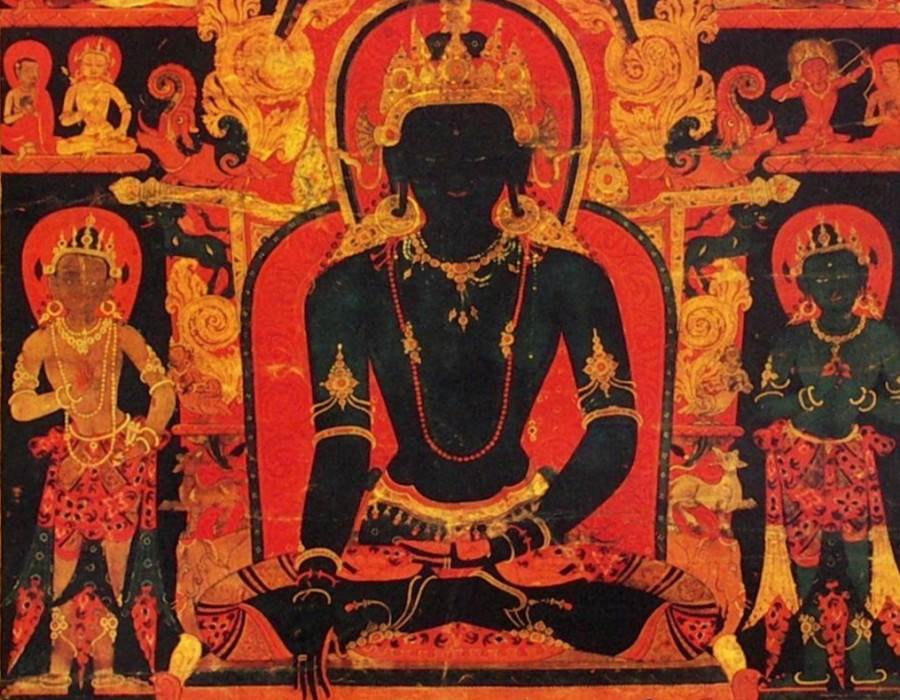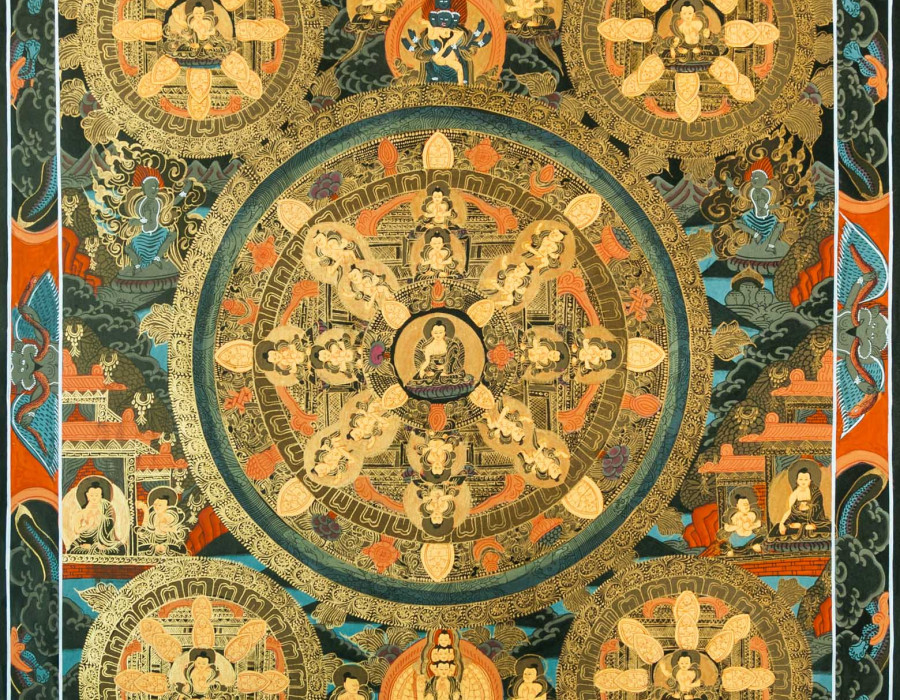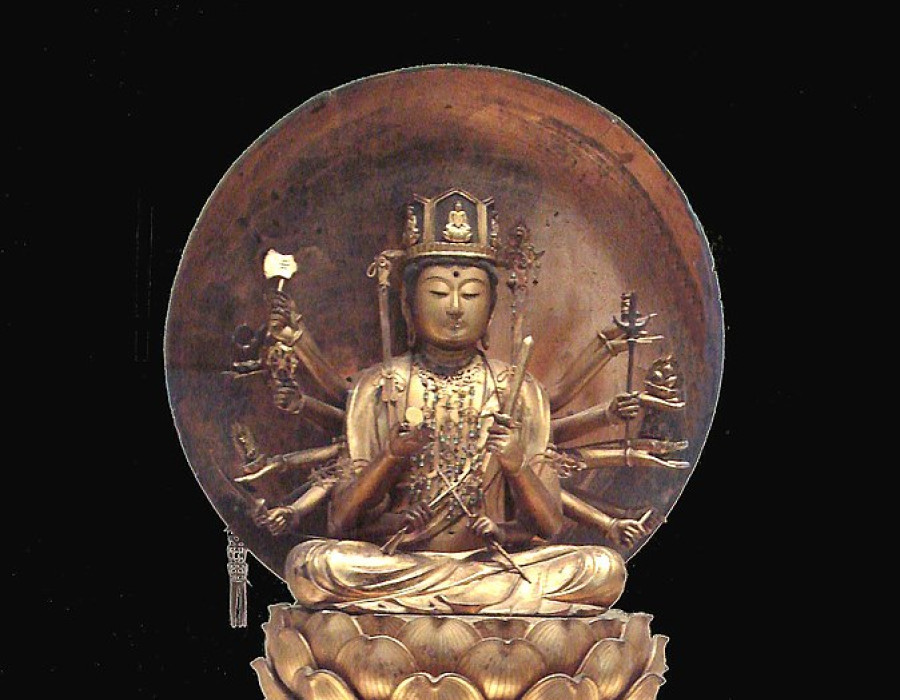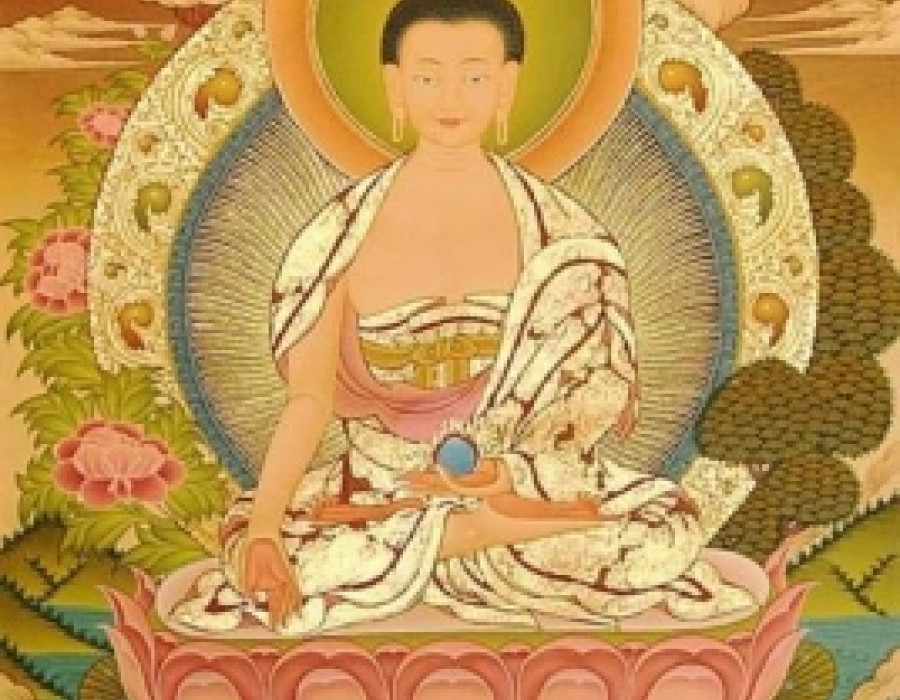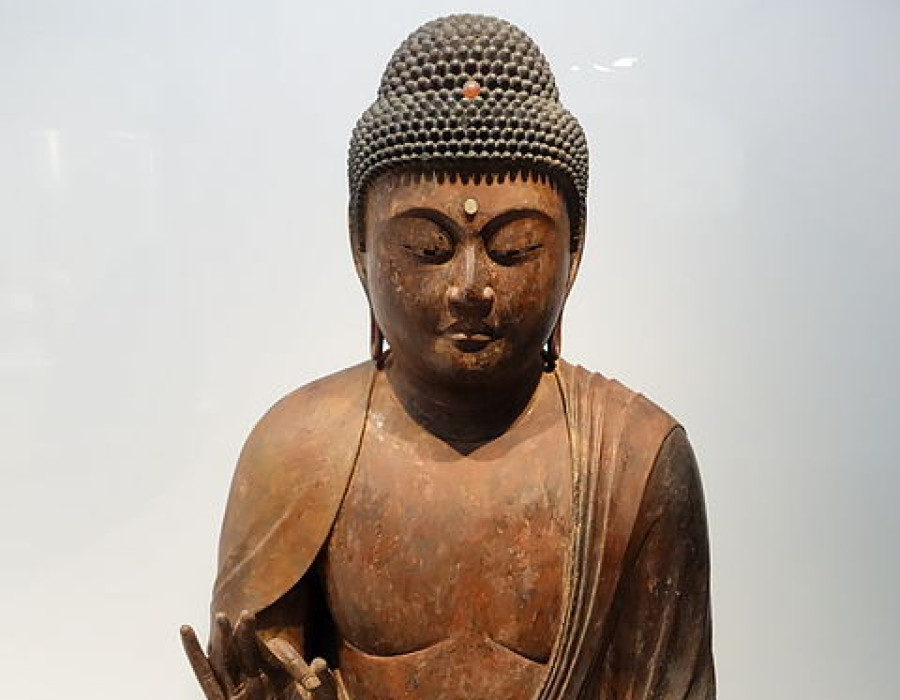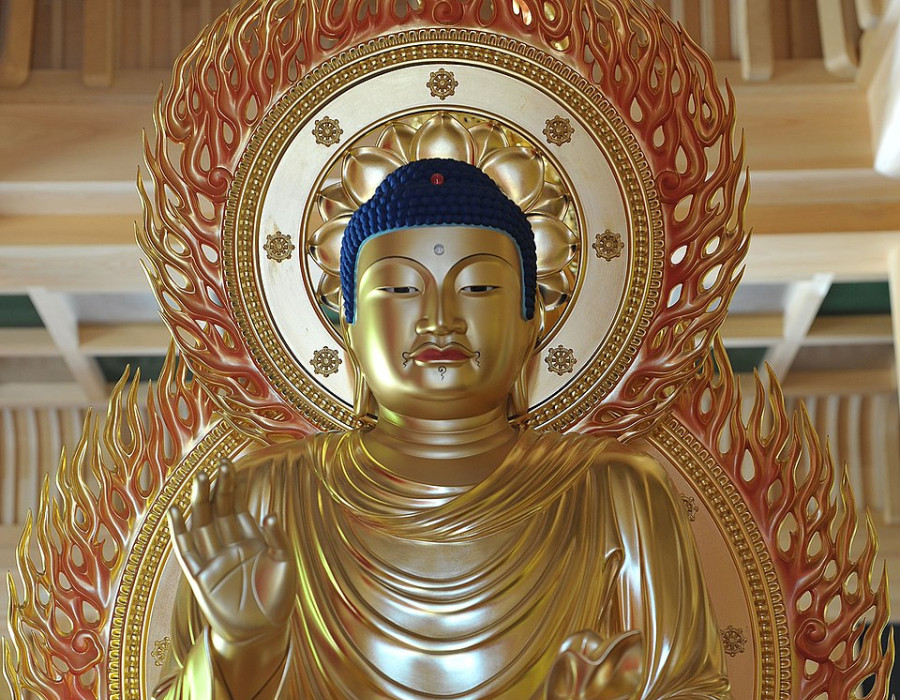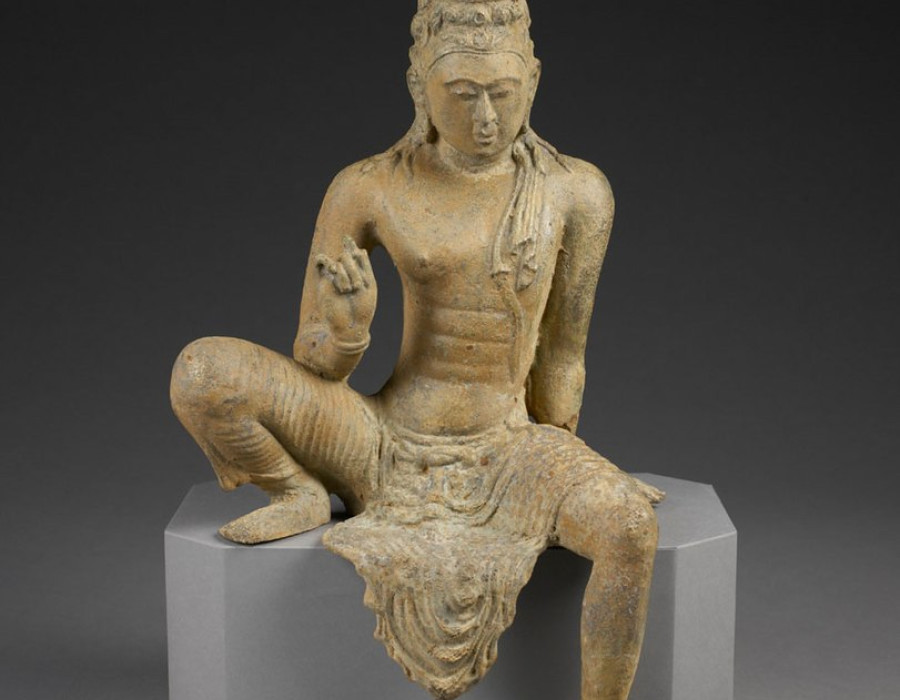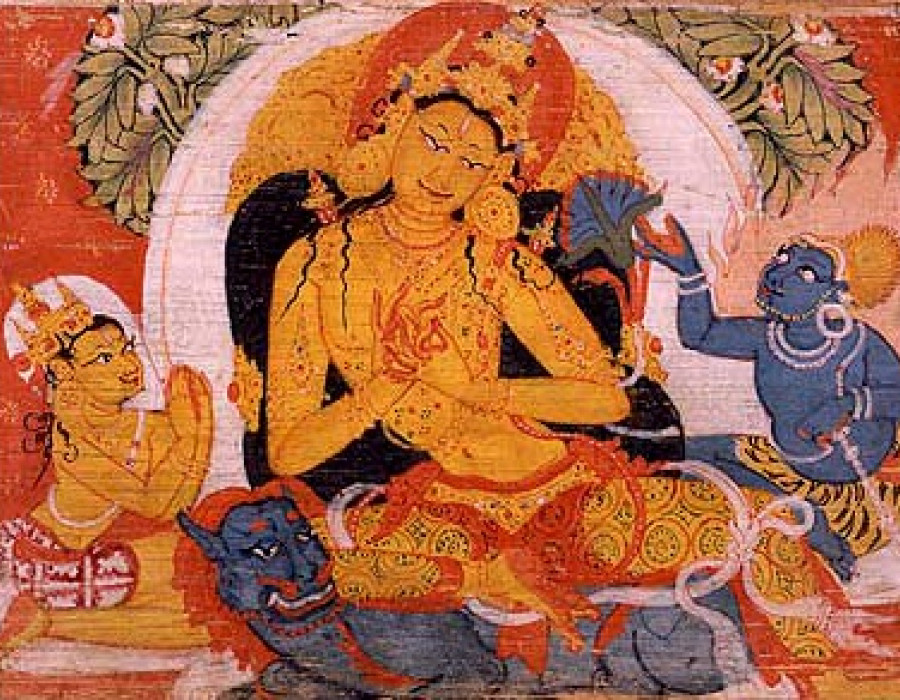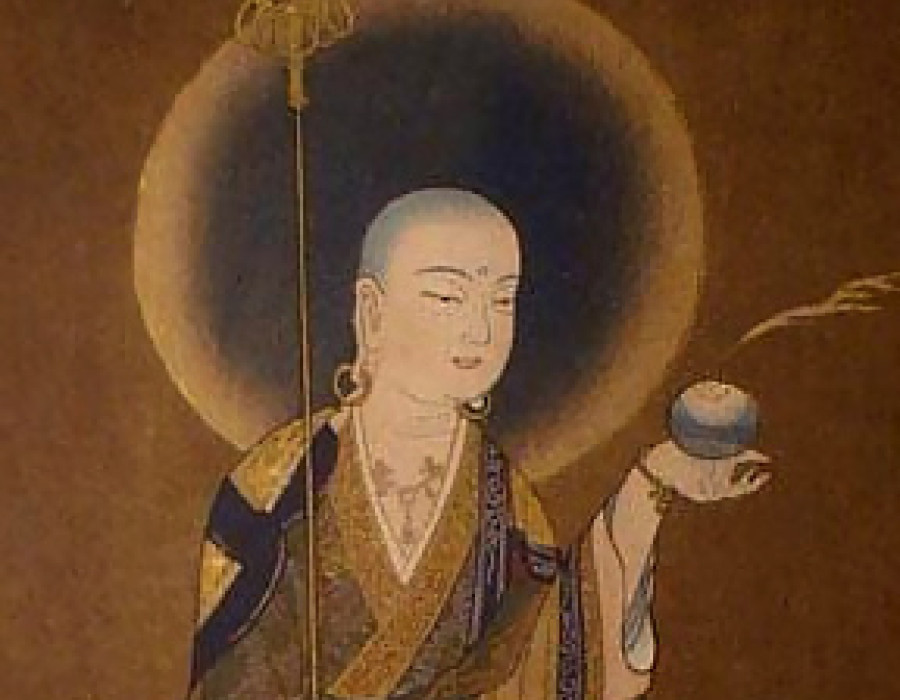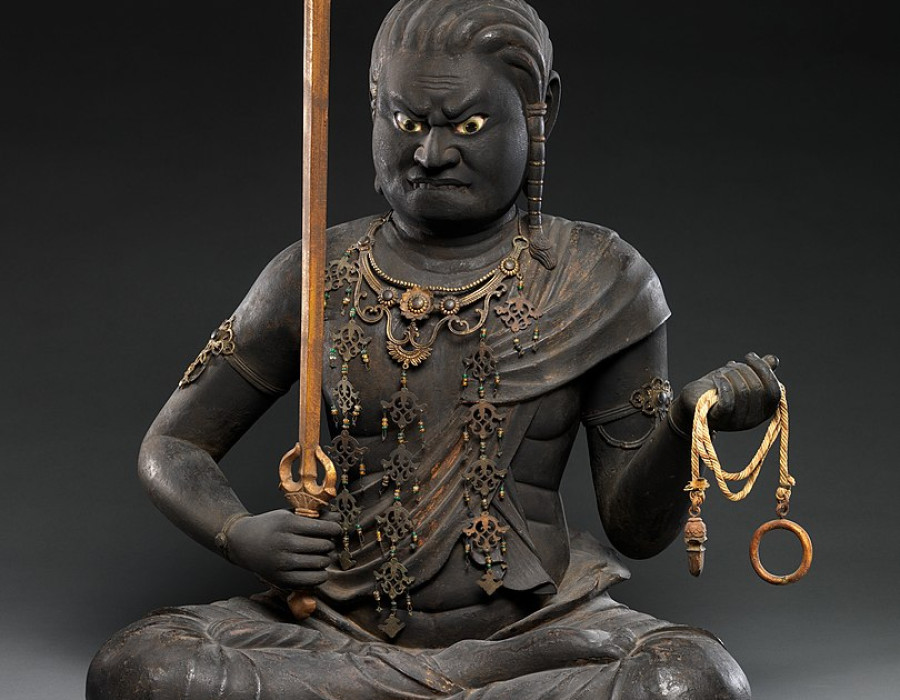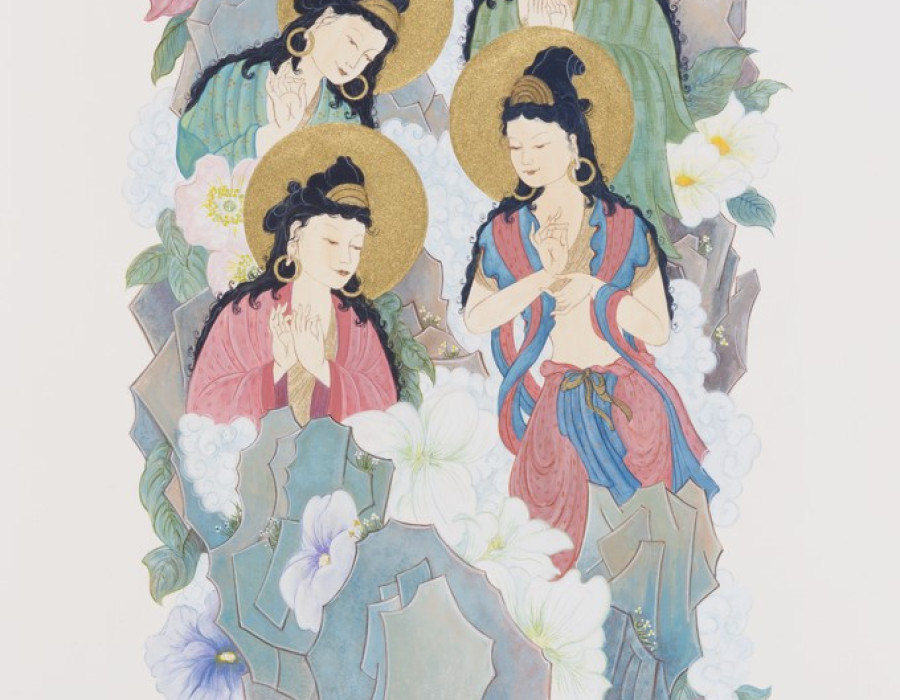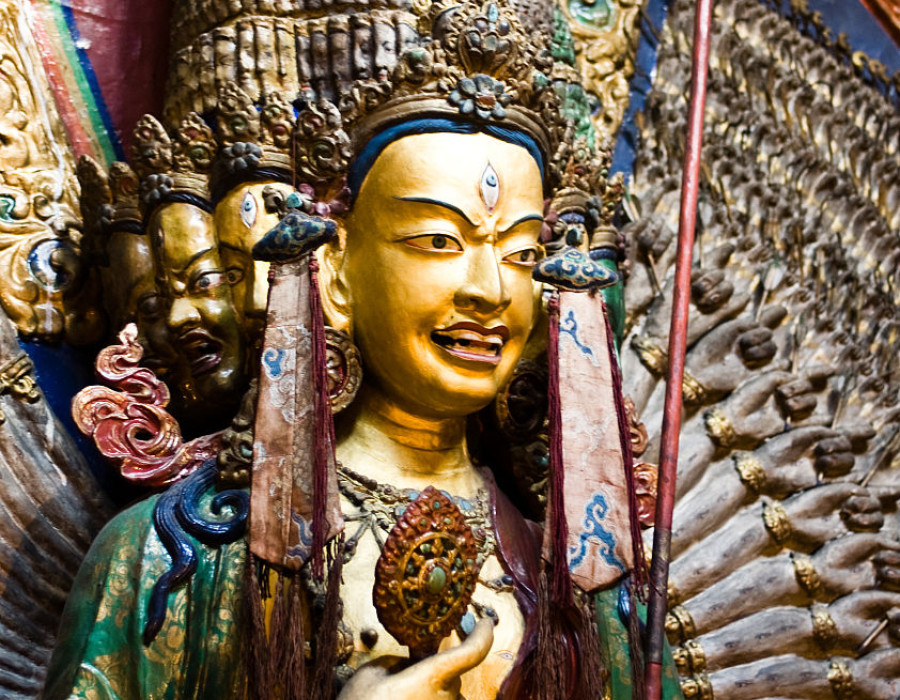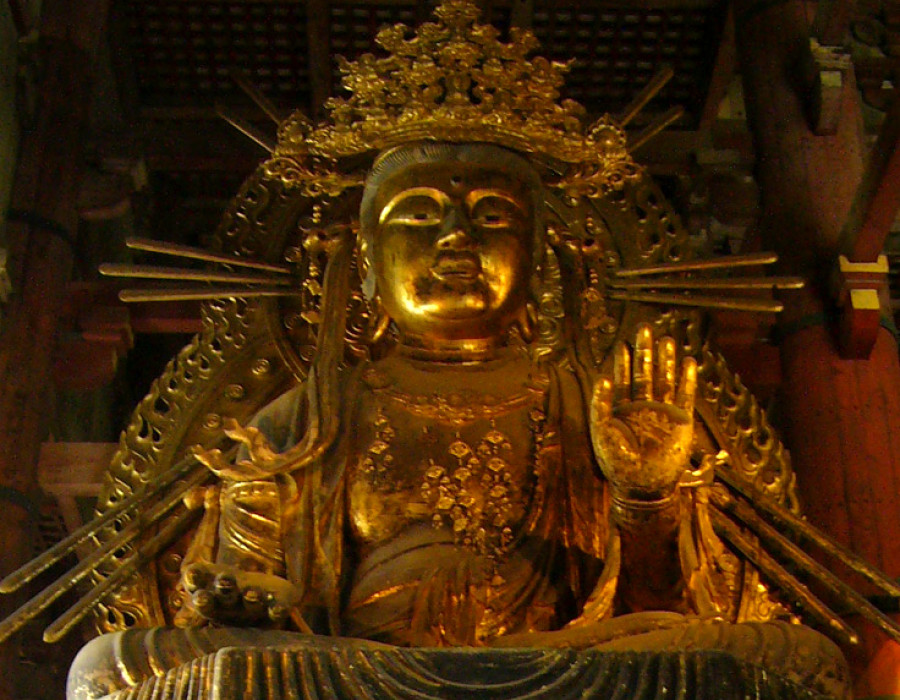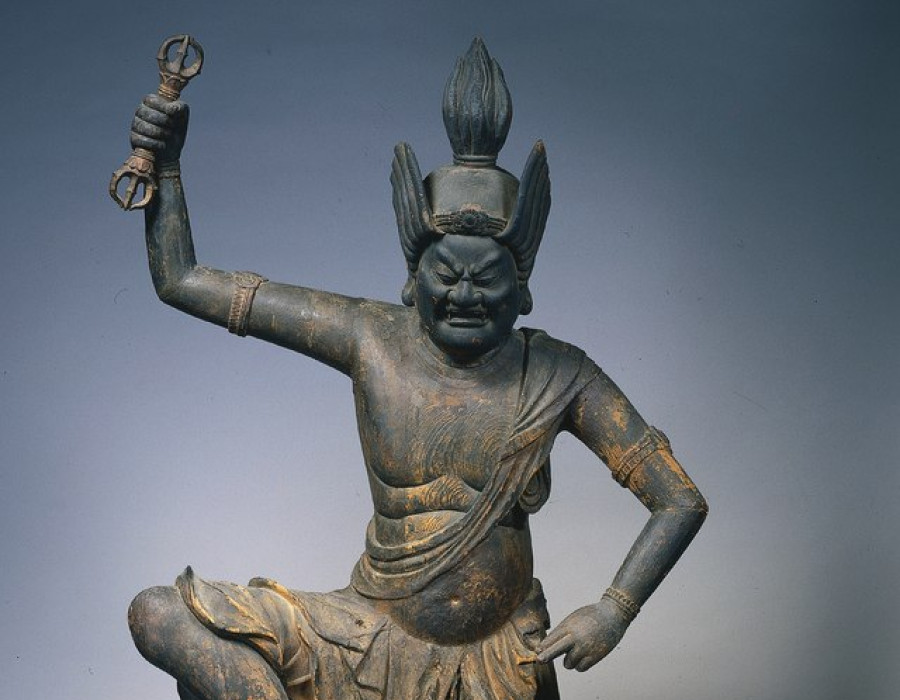
Martin Goodson
Ratnasambhava | The Five Wisdom Buddhas
The Way of Devotion
The cultivation of equality is the 'jewel' wisdom taught by this Buddha. Associated with vedana skanda Ratnasambhava is neither driven by nor averse to pleasant and unpleasant feeling and thereby leads to the attainment of Arhatship.
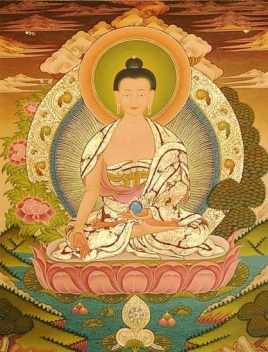
Ratnasambhava
This Wisdom Buddha is known as Hōshō Nyorai in Japan and is associated with vedana or feeling-sensation, one of the five skandas or aggregates that makes up a human being. The others are: body, perception, mental volitions and sense consciousness. Contemplation on this formula leads to realisation of No-I (anatta), and escape from samsara.
According to Karmic theory when feeling-sensation is pleasant or unpleasant it tends towards grasping which creates potent seeds (bijas), which perfume the flow of consciousness (dharma saṃtāna). This perpetuates the cycle of becoming on the Wheel of Life.
Ratnasambhava means ‘jewel born’ or ‘jewel becoming’ as bhava is a word that suggests cultivation and is one of the links in the Chain of Dependent Origination. This Buddha is associated with the wisdom of equality. By not being drawn along into grasping, this wisdom is able to apprehend without bias and therefore does not create seeds of future becoming in the six realms of suffering depicted on the wheel.
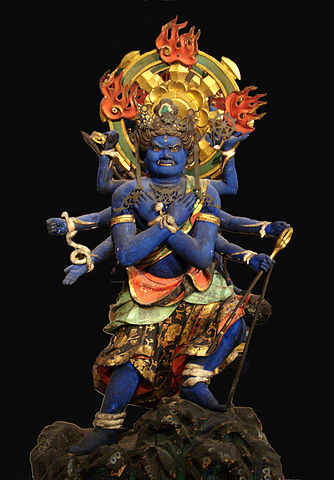
The Wisdom King Gundari is a manifestation of Ratnasambhava
By PHGCOM - Own work by uploader, Musee Guimet, CC BY-SA 3.0, https://commons.wikimedia.org/w/index.php?curid=7594818
Feeling-sensation conditions our tastes and habits. Through grasping we actively pursue what is pleasant and actively avoid what is unpleasant. By continued identification with what is pleasant,‘I’ fear loss, and through determined avoidance of what I find unpleasant ‘I’ fear being brought together with that very thing.. This creates no-go areas in my life.
In the life story of Prince Gautama, when he was born, he took seven steps in each of the four cardinal directions and declared that he was the World Honoured One. Through this act he displayed his wisdom and power to be able to go wherever he pleased because he was quite fearless and was not ruled by pleasure and pain. In the absence of the fear of feeling-sensation the world can hold no anxiety for us.
In the Kṣitigarbha Bodhisattva Pūrvapraṇidhāna Sūtra, it says that anyone, man or woman, who hears the name of this Buddha and pays respect to him will quickly attain to Arhatship. The mark of the arhat is that such a one is no longer subject to grasping and to the three fires of greed, aversion and delusion. The arhat is a being who is capable of release from suffering, entering into Nirvana.
In Japanese Buddhism his wrathful aspect is Gandari Myōō. He dispenses the great medicine of immortality, amrita - he leads beings out of the realm of birth and death.
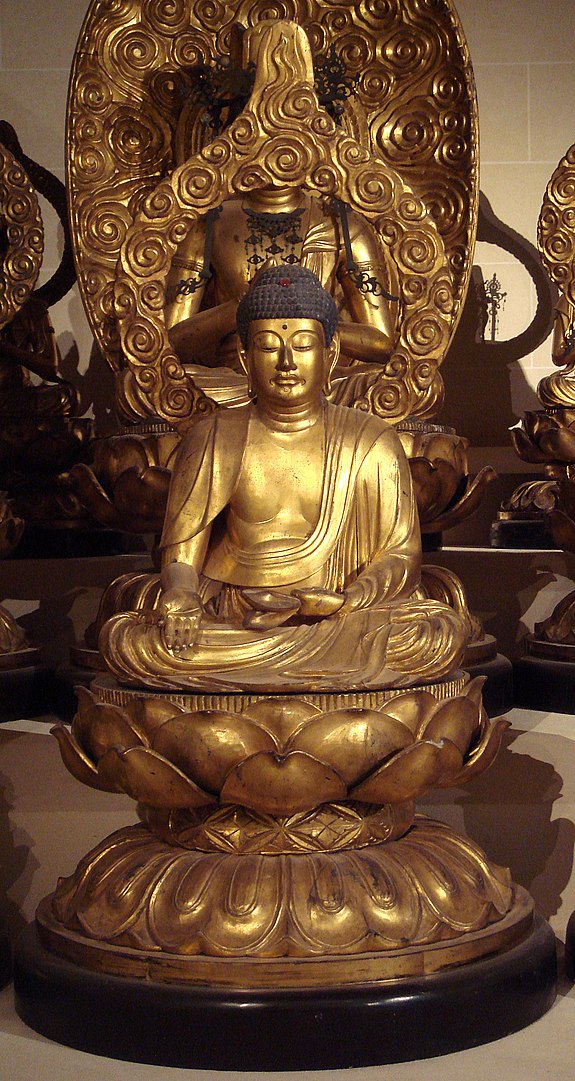
Houshou Buddha
By PHGCOM - Own work by uploader, photographed at Musee Guimet, CC BY-SA 3.0, https://commons.wikimedia.org/w/index.php?curid=7789842
Iconographically, Ratnasambhava is the Buddha of the southern realm who holds the bodhicitta jewel, his mudra is dana or giving, the first of the paramitas.
His mantra is: oṃ ratnasambhava traṃ

